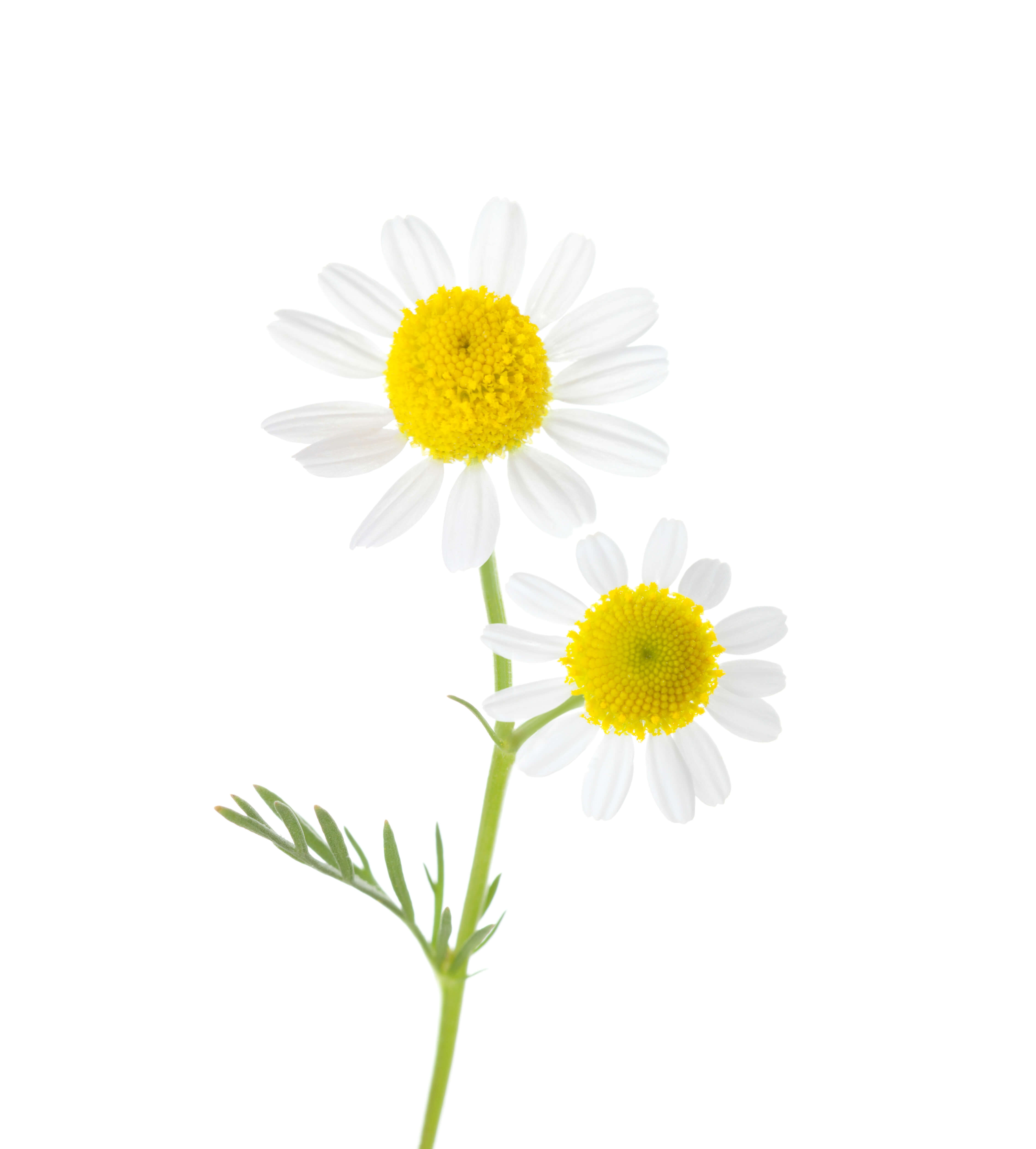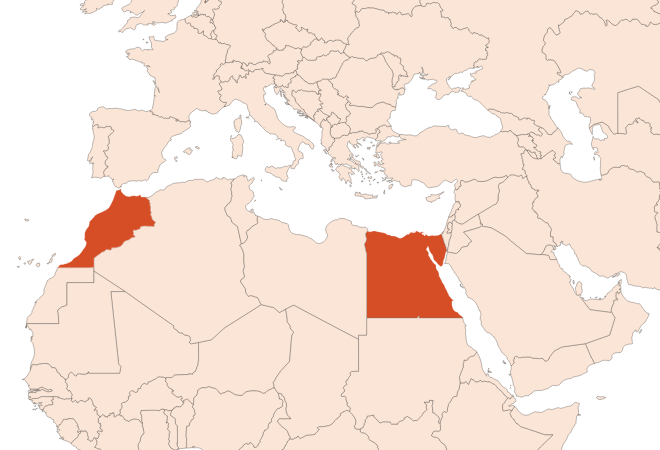Blue Chamomile EO
Naturelle
Spicy > Cool Spices > Coumarinic > Yellow Fruits > Honeyed

Crédits photo: ScenTree SAS
Latin name :
Matricaria recutica
Botanical profile :
Blue chamomile is a plant of the Asteraceae family and the genus Matricaria.
Geographic origin :
Originally from Germany, blue chamomile is now grown mainly in Egypt or in Maroc
Chemotypes :
Blue chamomile is a so-called ''sesquiterpenes '' chamomile for its composition. There are several varieties of chamomiles, some of which are only used in perfumery:
Anthemis nobilis or Roman chamomile, whose essential oil grown around the Mediterranean is also widely used in perfumery.
Anthemis arvensis is an scentless variety of chamomile.
Anthemis cotula or stinking chamomile, is renowned for its very powerful and unpleasant smell.
Anthemis tinctoria or yellow chamomile, is a yellow variety, grown in Europe and West Asia.
Ormenis multicaulis or Moroccan wild chamomile, grown for its essential oil in the Mediterranean basin. It has a fruity and green note.
Matricaria discoidea or pineapple weed, native to North America and subsequently introduced in France.
Four main chemotypes of blue chamomile exist, including one with α-Bisabolol (found in Spain and Portugal) and one with bisaboloxides, known to be antiviral.
Anthemis nobilis or Roman chamomile, whose essential oil grown around the Mediterranean is also widely used in perfumery.
Anthemis arvensis is an scentless variety of chamomile.
Anthemis cotula or stinking chamomile, is renowned for its very powerful and unpleasant smell.
Anthemis tinctoria or yellow chamomile, is a yellow variety, grown in Europe and West Asia.
Ormenis multicaulis or Moroccan wild chamomile, grown for its essential oil in the Mediterranean basin. It has a fruity and green note.
Matricaria discoidea or pineapple weed, native to North America and subsequently introduced in France.
Four main chemotypes of blue chamomile exist, including one with α-Bisabolol (found in Spain and Portugal) and one with bisaboloxides, known to be antiviral.
Extraction process :
The harvest of chamomile is made with a harvester.
Chamomiles are distilled in two ways: traditionally or in a truck box. Traditional distillation involves harvesting the chamomile with its stems without grinding it. The fresh plant is left outside to dry in the sun, before it is extracted classically, by steaming in distillation tanks. Truck box distillation consists in harvesting chamomile and its stem with a harvester by grinding it. The chamomile is extracted inside the harvest box, with a water vapor entry and an exit towards a coolant, where the essential oil is collected.
Traditional distillation gives a warmer and herbaceous scent, as both green and volatile molecules have evaporated during the drying step.
The extraction yield of blue chamomile is between 3 and 8 ‰.
The essential oil of blue camomile can be distilled to be bleached, without a great olfactory deterioration.
Chamomiles are distilled in two ways: traditionally or in a truck box. Traditional distillation involves harvesting the chamomile with its stems without grinding it. The fresh plant is left outside to dry in the sun, before it is extracted classically, by steaming in distillation tanks. Truck box distillation consists in harvesting chamomile and its stem with a harvester by grinding it. The chamomile is extracted inside the harvest box, with a water vapor entry and an exit towards a coolant, where the essential oil is collected.
Traditional distillation gives a warmer and herbaceous scent, as both green and volatile molecules have evaporated during the drying step.
The extraction yield of blue chamomile is between 3 and 8 ‰.
The essential oil of blue camomile can be distilled to be bleached, without a great olfactory deterioration.
Major Components :
For Egyptian type :
trans-béta-farnesène (15 - 35%)
Alpha-bisabolol oxide A (35 - 50%)
Alpha-bisabolol oxide B (2 - 8%)
Alpha-bisabolol (1-10%)
Bisabolone oxide A (2 - 6,5%)
Chamazulene (2 - 5%)
For Hungarian type :
trans-béta-farnesène (20 - 51%)
Alpha-bisabolol oxide A (2 - 27%)
Alpha-bisabolol oxide B (2 - 21%)
Alpha-bisabolol (15 - 40%)
Bisabolone oxide A (1 - 4%)
Chamazulene (5 - 22%)
trans-béta-farnesène (15 - 35%)
Alpha-bisabolol oxide A (35 - 50%)
Alpha-bisabolol oxide B (2 - 8%)
Alpha-bisabolol (1-10%)
Bisabolone oxide A (2 - 6,5%)
Chamazulene (2 - 5%)
For Hungarian type :
trans-béta-farnesène (20 - 51%)
Alpha-bisabolol oxide A (2 - 27%)
Alpha-bisabolol oxide B (2 - 21%)
Alpha-bisabolol (15 - 40%)
Bisabolone oxide A (1 - 4%)
Chamazulene (5 - 22%)
- Uses in perfumery :
- Used in fine fragrance in fougere, rose, dried fruits, tea and in association with sagebrush.
- Other comments :
- The compound that gives the oil its blue colour is called chamazulene. Over time, the blue colour tends to disappear into an alcoholic base and give way to a browner hue.
Adulteration is possible using low cost Bisabolol, extracted from a shrub called Candeia (Vanillosmopsis erythropappa), known for its high Bisabolol content. - Volatility :
- Heart
- Appearance :
- Blue liquid
- Stability :
- Solubility issues in perfumes
Can fade through time and get a brownish colour
The terpenes identified in this raw material can polymerize when they are oxidized - Price Range :
- €€€€€
- Aromatherapy :
Informations provided below are taken from reference works in aromatherapy. They are given for information purposes only and can not constitute medical information, nor engage the responsibility of ScenTree.
Blue chamomile has calming, sedative, antispasmodic, anti-inflammatory and antiseptic properties among others. It is recommended in case of eczema and stomach ulcer for example.

Crédits photo: ScenTree SAS
- EINECS number :
- 282-006-5
- FEMA number :
- 2273
- Allergens :
- D-Limonene
- IFRA :
- This ingredient is restricted by IFRA
- Annexe I :
- Some regulated synthetic ingredients are found in nature and in certain proportions in natural ingredients. This presence in nature has to be taken into account when calculating limits of use recommended by the IFRA. In case you do not know these concentrations, you can use the ones estimated by the IFRA. Here they are :
| List of regulated compounds contained in this ingredient | ||
|---|---|---|
| Regulated ingredient name | CAS N° | Estimated Concentration |
| alpha-Bisabolol | 515-69-5 | 4 |
This ingredient is not restricted for the 48th amendment
To learn more about IFRA's standards : https://ifrafragrance.org/safe-use/library
ScenTree is solely responsible for the information provided here.


